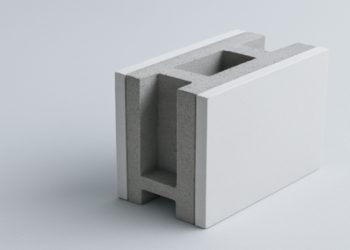In the realm of civil engineering, efficiency and precision are paramount. Projects often hinge on the ability to execute intricate tasks seamlessly, especially when it comes to concrete placement and construction. One such specialized tool that plays a crucial role in these endeavors is the Mini Tremie Hopper. This article delves into the intricacies of what a Mini Tremie Hopper is, its functions, applications, operational principles, and its significance in modern construction practices.
What is a Mini Tremie Hopper?
A Mini Tremie Hopper is a specially designed apparatus used in construction projects, primarily for the purpose of pouring concrete precisely into formwork or molds. It is a compact version of the traditional tremie hopper, tailored to meet the needs of smaller-scale or confined-space projects where maneuverability and precise concrete placement are essential.
Historical Context and Evolution
The concept of tremie hoppers dates back several decades, evolving alongside advancements in construction techniques and materials. Originally developed to facilitate the controlled pouring of concrete in underwater applications, such as bridge piers and dams, tremie hoppers have since been adapted for a wider range of construction scenarios. The miniaturization of these hoppers came about as construction practices diversified and the demand for more versatile equipment grew.
Components and Design
A typical Mini Tremie Hopper consists of several key components designed to facilitate efficient concrete placement:
- Hopper: The main reservoir where concrete is temporarily stored before pouring.
- Gate or Valve: Controls the flow of concrete from the hopper into the delivery chute or tube.
- Chute or Tube: Directs the concrete flow precisely into the desired location.
- Support Structure: Provides stability and facilitates attachment to concrete pumps or other delivery mechanisms.
Operational Principles
The operation of a Mini Tremie Hopper revolves around principles aimed at ensuring the uniform distribution and consolidation of concrete. Here’s how it typically works:
- Preparation: The hopper is positioned above the formwork or the designated pouring area.
- Loading: Concrete is loaded into the hopper either manually or through a concrete pump.
- Controlled Release: The gate or valve is opened to allow a controlled flow of concrete through the chute.
- Precision Placement: Operators maneuver the chute to direct the concrete precisely into the formwork or mold.
- Consolidation: As concrete flows, it displaces any air voids, ensuring thorough consolidation and eliminating potential voids or weak spots.
Applications in Construction
The versatility of Mini Tremie Hoppers makes them indispensable in various construction scenarios:
- Building Foundations: Used to pour concrete into foundation trenches or footings with limited access.
- Small-scale Structures: Ideal for projects such as retaining walls, culverts, and small bridges where precise concrete placement is critical.
- Vertical Applications: Facilitates pouring concrete for columns and walls where traditional pouring methods might be impractical.
Advantages Over Traditional Methods
The adoption of Mini Tremie Hoppers offers several distinct advantages over traditional concrete pouring methods:
- Precision: Ensures accurate placement and consolidation of concrete, reducing the likelihood of voids or weak points.
- Efficiency: Streamlines the pouring process, saving time and labor compared to manual methods.
- Flexibility: Adaptable to various project scales and configurations, including confined spaces where larger equipment cannot operate effectively.
- Cost-effectiveness: Minimizes material waste and rework, contributing to overall project cost savings.
Challenges and Considerations
While Mini Tremie Hoppers provide significant benefits, their deployment requires careful planning and consideration of factors such as:
- Access: Ensuring adequate space for maneuvering and positioning the hopper.
- Maintenance: Regular inspection and upkeep to prevent blockages or malfunctions.
- Operator Skill: Proper training for operators to handle the equipment safely and effectively.
Innovations and Future Trends
As construction technology continues to advance, so too does the evolution of Mini Tremie Hoppers. Innovations in materials, design, and automation are enhancing their capabilities, making them even more indispensable in modern construction practices. Future trends may include:
- Smart Hopper Systems: Integration of sensors and automated controls for precise concrete flow management.
- Lightweight Materials: Development of lighter yet durable materials to enhance mobility and ease of handling.
- Environmental Considerations: Adoption of eco-friendly materials and processes to minimize the environmental impact of construction activities.
Conclusion
The Mini Tremie Hopper represents a pivotal advancement in the field of civil engineering, offering a sophisticated solution for the precise and efficient placement of concrete in diverse construction projects. Its compact design, coupled with robust operational capabilities, makes it an invaluable asset for contractors and engineers alike. As construction methodologies evolve and project demands grow, the Mini Tremie Hopper continues to play a crucial role in shaping the built environment, ensuring structures are built on a foundation of precision and reliability.
In essence, understanding the intricacies of the Mini Tremie Hopper underscores its significance as a testament to innovation in construction equipment, empowering engineers to achieve their goals with unparalleled efficiency and accuracy.
David Prior
David Prior is the editor of Today News, responsible for the overall editorial strategy. He is an NCTJ-qualified journalist with over 20 years’ experience, and is also editor of the award-winning hyperlocal news title Altrincham Today. His LinkedIn profile is here.













































































